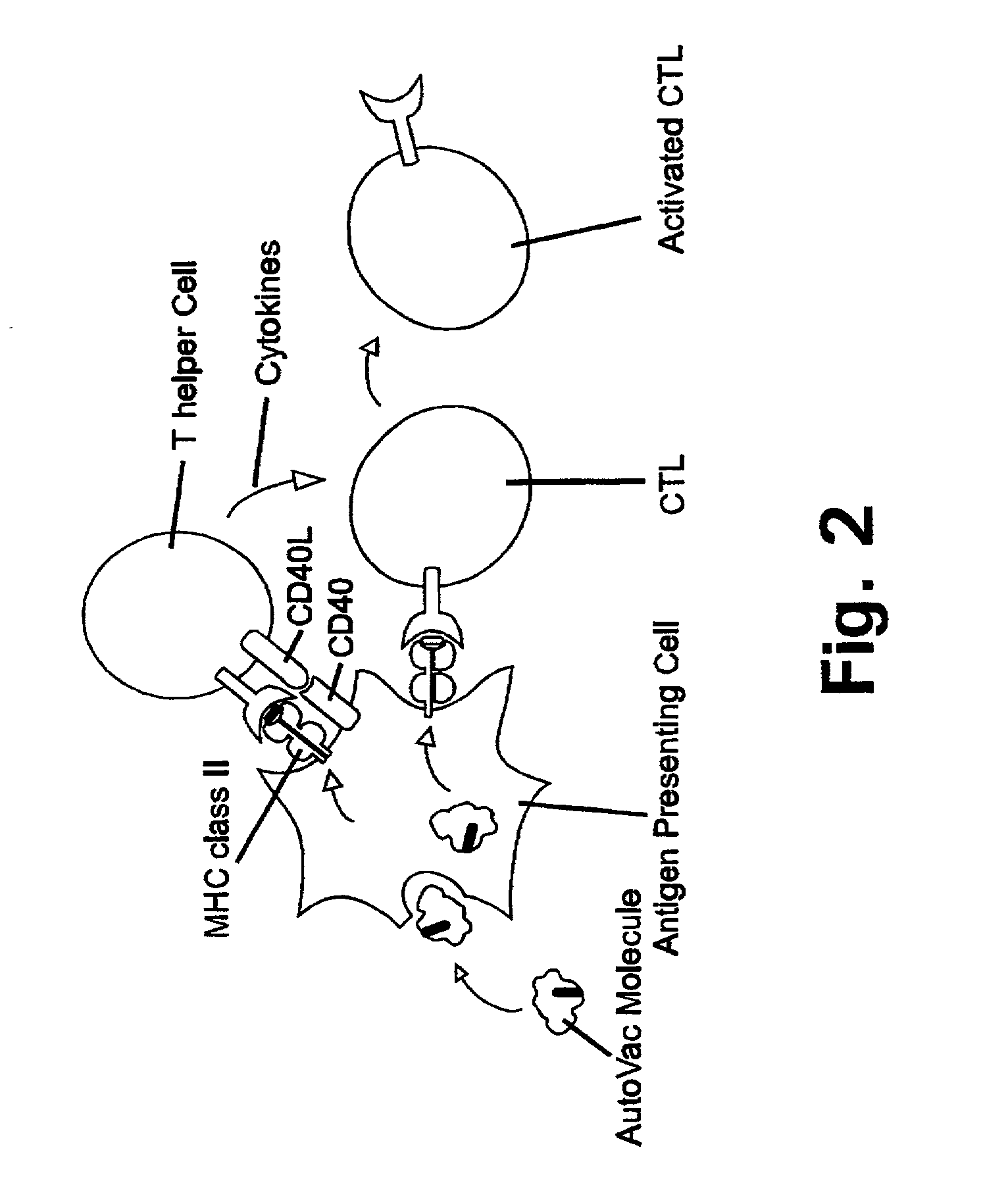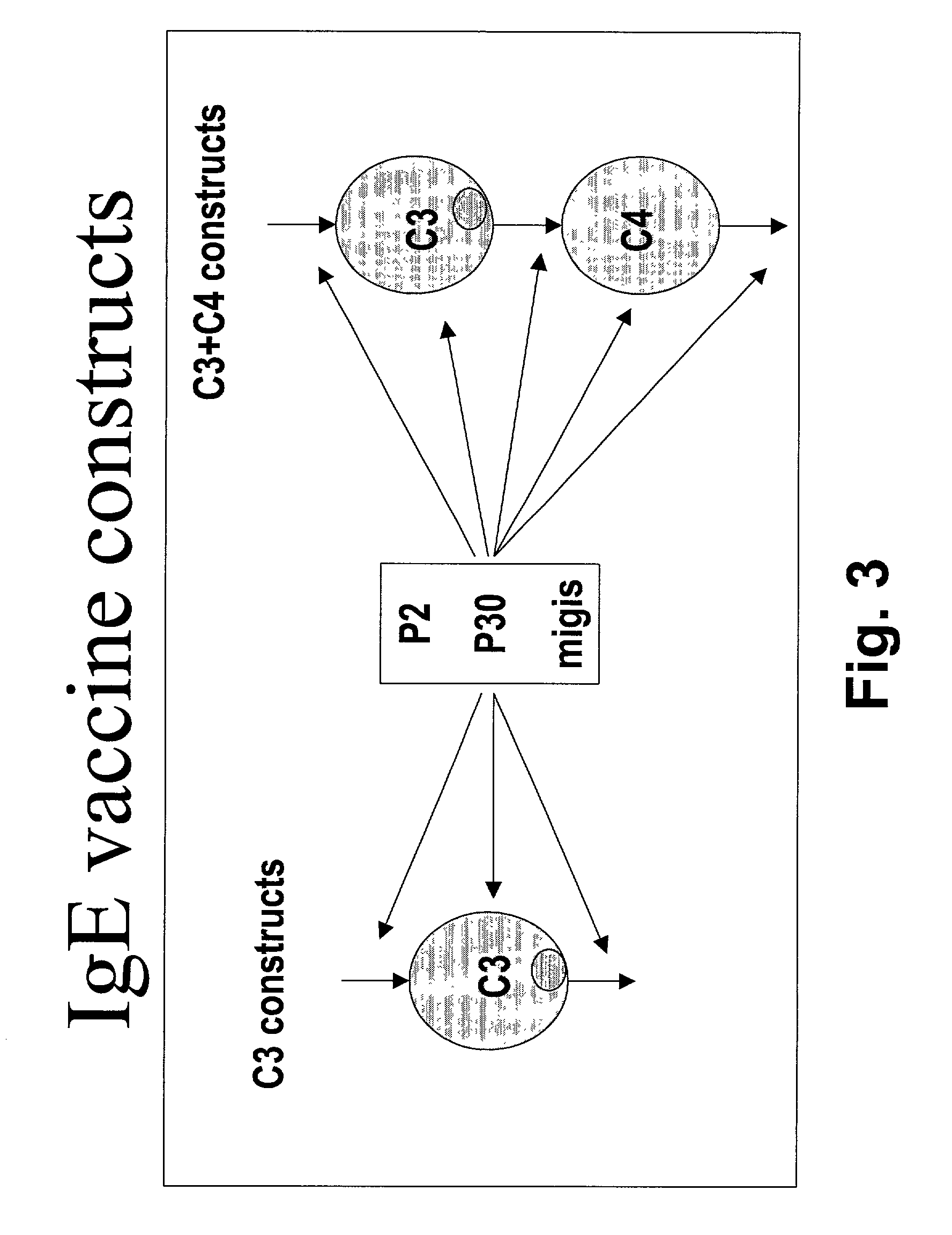Method for down-regulating IgE
a technology of ige and ige, applied in the field of down-regulating ige, can solve the problems of insufficient separation of 2 pathways, huge human and economic costs of ige, and inability to fully distinguish two pathways
- Summary
- Abstract
- Description
- Claims
- Application Information
AI Technical Summary
Benefits of technology
Problems solved by technology
Method used
Image
Examples
examples
Cloning of the IgE heavy chain gene and coding sequences
[0220] Plasmids containing the human and murine genes encoding the IgE heavy chain C region and / or the membrane bound IgE heavy chain C region are available from various sources. Also, the sequence information relating to both the human and the murine IgE heavy chain is publicly available.
[0221] Isolation or synthesis of genes encoding the CH2-CH3 region will be necessary for constructing the Fc-receptor binding molecule fragments. Isolation or synthesis of genes encoding the membrane bound murine IgE heavy chain part will be necessary for identification of the MIGIS sequence which is disclosed in patents assigned to Tanox Biosystems.
[0222] It was originally the intention to isolate the gene fragment encoding entire CH2-CH4 (with and without MIGIS) by the use of either plaque hybridisation and / or PCR technology using conserved primers. However, at a later stage it was decided also to synthesise non-naturally occurring genes enc...
PUM
| Property | Measurement | Unit |
|---|---|---|
| temperatures | aaaaa | aaaaa |
| structure | aaaaa | aaaaa |
| β- | aaaaa | aaaaa |
Abstract
Description
Claims
Application Information
 Login to View More
Login to View More - R&D
- Intellectual Property
- Life Sciences
- Materials
- Tech Scout
- Unparalleled Data Quality
- Higher Quality Content
- 60% Fewer Hallucinations
Browse by: Latest US Patents, China's latest patents, Technical Efficacy Thesaurus, Application Domain, Technology Topic, Popular Technical Reports.
© 2025 PatSnap. All rights reserved.Legal|Privacy policy|Modern Slavery Act Transparency Statement|Sitemap|About US| Contact US: help@patsnap.com



